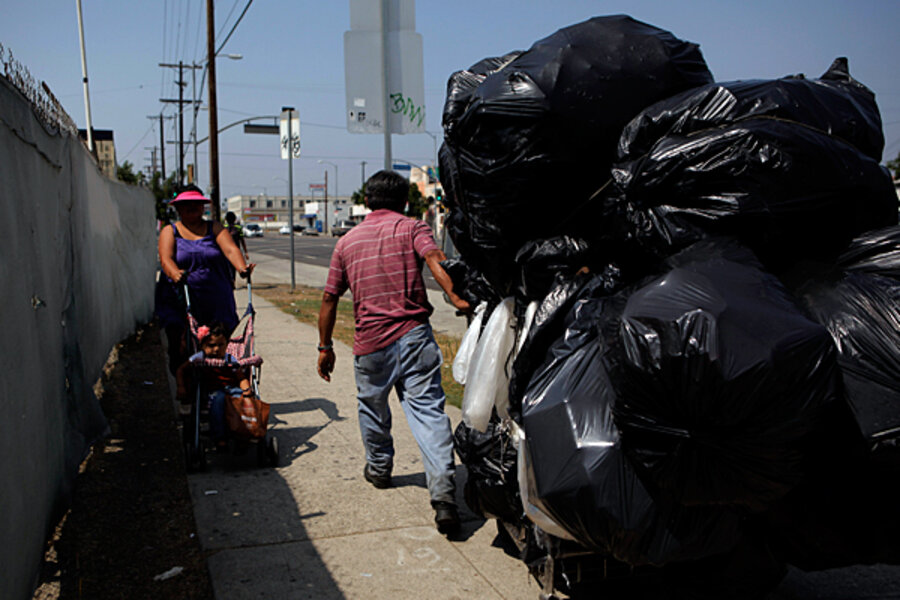To define poverty, US has a new (and improved?) formula.
Loading...
How to get the clearest picture of who is poor in America?
That’s a question poverty experts have grappled with for years – and years. At last, the Census Bureau is updating how it measures who’s poor and who’s not – aka the poverty line.
Until this month, the poverty line has been calculated the same way for half a century. It was developed in 1964 as part of Lyndon Johnson’s War on Poverty. Ever since, a debate has ensued about how to determine who’s truly poor.
What’s the controversy? For starters, the original poverty line is pegged to only one thing: food costs as a share of annual income. But now, the Census Bureau will count other factors that might drive people into poverty, says Tim Smeeding, director of the Institute for Research and Poverty at the University of Wisconsin-Madison. These include, say, medical expenses and the higher rents in Manhattan versus Memphis. It also will take into account what the US government provides people to fight poverty, including food stamps, public housing, and refundable tax credits, Mr. Smeeding adds.
The new benchmark for poverty to be unveiled Nov. 7 – which has the catchy name of “the supplemental poverty measure” – also expands the definition of a family. Back in the ’60s, it was two adults and two children. Now, it is allowed that a single parent might be at the helm of a family.
The old poverty measurement won’t go away. For continuity’s sake, it’s useful to have the year-over-year, decade-over-decade comparison. But experts say the new supplemental poverty measure will offer a clearer window on the poor.
And what do they expect to see? Many suggest that the number of elderly poor will rise, because they have the bigger out-of-pocket medical expenses. And nontraditional families – say, a woman living with her boyfriend and child – might be better off than anyone previously thought.
The ultimate aim is to try to better reflect the well-being of people who are grappling with poverty, and in doing so, to determine how federal aid programs might better help. This means, Smeeding says, “looking at the way that various programs pull them out of poverty – or push them down.”
Get daily or weekly updates from CSMonitor.com delivered to your inbox. Sign up today.





